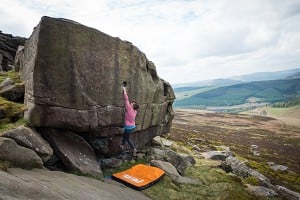
In March 2019, GB Junior Climbing Team coach Ian Dunn was invited to coach 6 of Asia and Australia's top young climbing athletes at Mori Park in the outskirts of Tokyo, Japan, on a week-long training camp funded by international financial services company JLL. Climbing participation and competitive expectations are on the rise in Asia and ahead of Tokyo 2020 and Paris 2024, these teenagers are setting their sights on representing their countries at Olympic level. Using innovative motion technology and his years of experience in coaching, Ian was tasked with helping them to achieve their ambitions. The project was filmed and short profiles of each athlete and Ian were shared on National Geographic's website.
Each athlete faces hurdles in the way of their ambition, which range from a lack of training facilities, to difficult academic and career choices to making the cut in a highly competitive climbing country.
We sent Ian some questions to find out more about his work with the following team of athletes:
Angie Scarth-Johnson - Australia
Emmanuel Ryan Paul - Singapore
Ka-chun Yau - Hong Kong
Karin Kojima - Japan
Mark Chan - Singapore
Siddhi Manerikar - India
What were the aims of your week as coach?
My job was to profile the climbers and see what their strengths and weaknesses were and figure out how they could pursue their goals. I also tried to help them ensure their goal was realistic even if ambitious. Most had the Olympics as a target and I explained to them that Paris might be a better option than Tokyo given their current levels. JLL wanted to raise their profile worldwide and particularly in Asia. They are an international financial services company and wanted a sport to sponsor; they liked climbing as it is going to be showcased in the Tokyo Olympics.
Before you went to Japan, did you know much about the athletes you were going to coach?
I received a profile of each athlete and their current training plans (or summaries of them). I had heard of Angie Scarth-Johnson from her hard redpoints in Spain and Australia. I had seen Mark at the World Youth Championships in Moscow, too, but I didn't know the others.
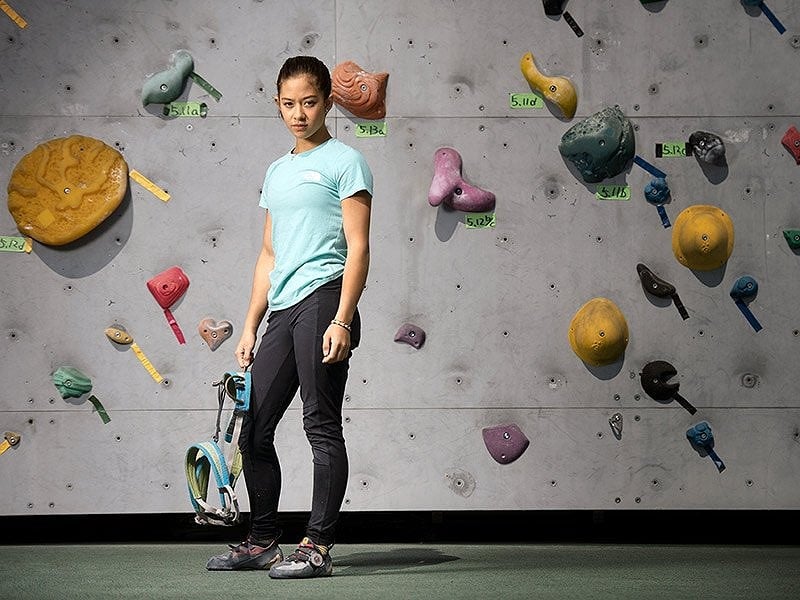
How did you get to know the athletes and their strengths and weaknesses?
On the first day, I profiled the athletes in Lead, Speed and Bouldering. I used a system that I use with the GB Development Squad. This basically gives them a score on their technical and tactical aspects of their climbing. It is very good at highlighting weaknesses and generally it is easier to work on these to make gains. We also had some new technology, which was interesting to look at and see if my observation was confirmed. The athletes were very friendly, totally up for the tasks I had planned and wanted to pick up as many tips as they could. Sometimes with making the films this was challenging from a coaching perspective as I would not be able to concentrate on something as much as I would have liked as we had to get the footage for the films. The athletes were very understanding of this and we just worked around it.
Asian climbers are on the rise in World Cups (YueTong Zhang, Chaehyun Seo, and many Speed athletes) Did you notice any different/interesting approaches to climbing coaching and training from the Asian athletes compared to Western techniques?
I think that the Asian mindset is very good for pushing themselves and working hard. They have a great work ethic and are very disciplined when it comes to training. There is also a lot of competition to achieve their National Teams and maintain their place which makes them work very hard and not rest on their laurels. I am not saying that European's don't work hard - those at the top of the game work equally hard as the Japanese, for example, however the general climbing population doesn't have the same discipline.
Siddhi from India has the fewest opportunities to train and lacks the facilities that the other athletes have. What advice did you give to her to improve her climbing, and what did you learn from her attitude to climbing?
Siddhi is super determined, she always wanted more, she stayed back to do more training - even though she was nursing an injury. My main advice for her was that she needed to move to a city with some training facilities and also people to compete with. Training on your own is very hard as you can easily become a 'big fish in a small pond' and not see the bigger picture. She had climbed 8a, which considering what she had to train on is pretty impressive. I always have believed it is having a world class attitude rather than world class facilities that makes world class athletes. Interestingly, at the European Youth Cup in Lead recently there were only two Austrian podiums in all 6 categories when they have probably the best Lead training wall in the world!
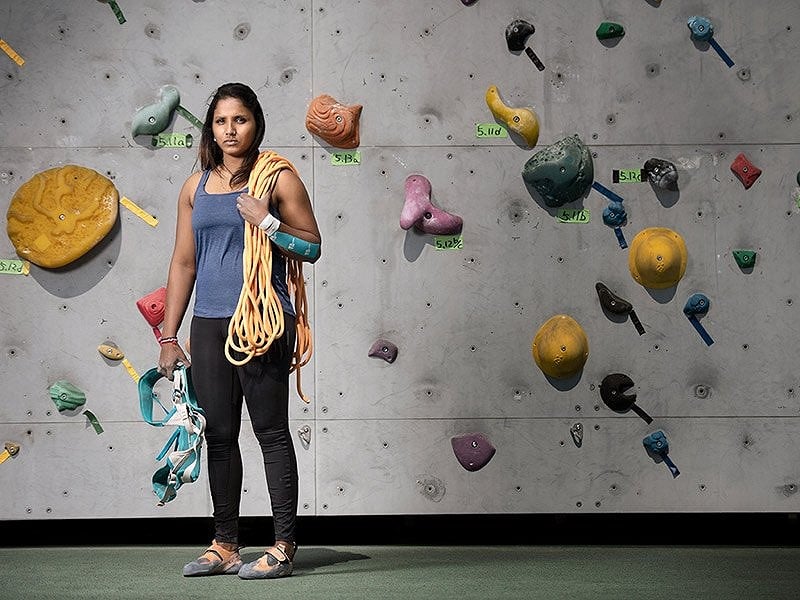
Yau is a fully funded professional climber by the Hong Kong government. Did you get much of a sense of how climbing is funded or not in different countries through working with these athletes?
Each country had different ways of funding their athletes. For Angie it was through sponsorship (mainly The North Face). The Japanese have a fairly rigid system, but only receive funding at National level, and that is in the form of fully funded trips to competitions and training camps. In Singapore they have a Sports Institute which supports climbing. In India there is virtually nothing but small sponsors and in Hong Kong top athletes receive a sports scholarship.
You've been climbing for over 40 years. What are the biggest changes in competitive climbing coaching since the birth of the sport?
When i started climbing in 1974 the hardest routes in the world were around 7a+. In the UK, Footless Crow and Right Wall were the top climbs, and bouldering was something you did after doing routes on sandstone and grit and was not a sport in its own right. Climbing walls were vertical brick and concrete and training consisted of doing some pull-ups! Competitions only existed in Russia for speed climbing!
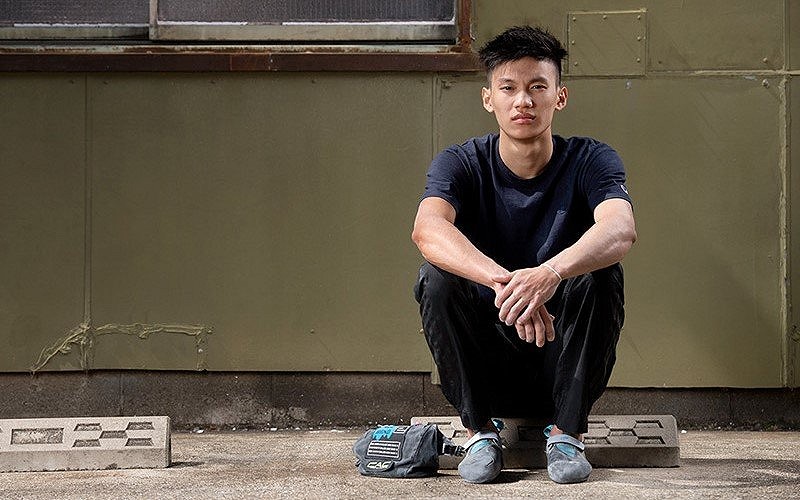
A lot has changed and I welcome it. It has brought a greater diversity of activities and I love watching climbers trying to beat the routesetters and top the challenges put before them, both in Lead and Bouldering. I love the fact our sport is so varied, even though the triathlon of climbing in the Olympics is a bit odd. I spent time in isolation with climbers doing this discipline at the World Youth Championships two years ago and it was really interesting and the climbers were enjoying the event too. I agree it is very, very hard to train to excel at 3 different aspects of our sport but it is an exciting challenge.
The combined Olympic format of Speed, Boulder and Lead is challenging not only because of the different skills they each require, but also due to the facilities needed (especially Speed and Lead). What are the physical/training challenges of this new format? Do you see this format as limiting in terms of participation and qualification for those in less developed countries climbing-wise?
Even countries like the UK have very poor access to Speed walls for the majority of climbers. Those that have a Speed wall close at hand have a massive advantage. At Mori Park they had a 4 lane speed wall with one lane just having the top section on it so you could perfect sections before linking it together. Good lead walls are few and far between too, especially ones with world class competition routes on them that are changed regularly. In the UK it is unlikely that walls will have more than two routes of 8a and above (and that is below the qualification level for EYC youth B, hardly a challenge for Olympic hopefuls). Most athletes serious about training Speed and Lead need to travel to walls where there are plenty of routes, or plenty of walls, e.g. Imst, Innsbruck, Telfs etc. in Austria. This is why the Tirol Tourist Board put 4 million Euros into supporting the Kletterzentrum Innsbruck. In the two years it has been open they must have had lots more than 4 million Euros brought in, in hotel nights, restaurant meals, shopping etc. in Innsbruck that would not have happened without that centre. I still think it is possible to train on smaller facilities; coaches just need to be creative, and plan some travelling too.
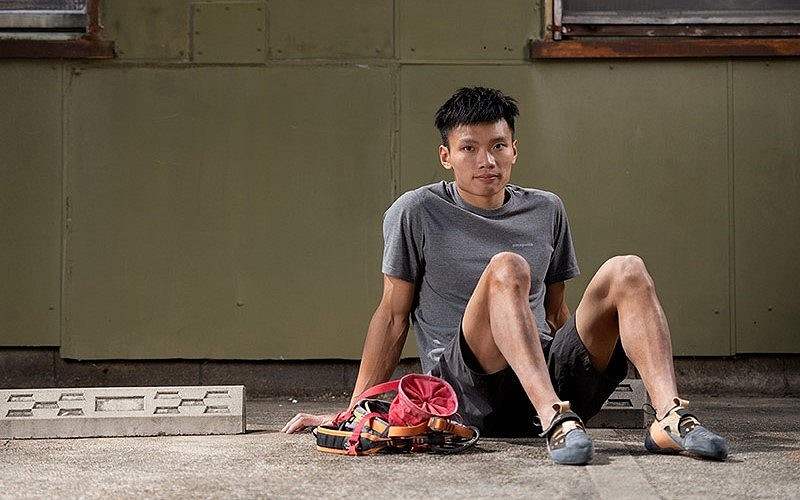
Tell us a bit about the innovative technology that you worked with. How does it help you/the climbers identify weaknesses? Can you see coaches using motion tech in future, or is it already happening?
I enjoyed looking at the motion centred technology. It showed me lots of things that are difficult to pick up on to the naked eye or even by replaying videos. For example, it really highlighted when someone started to lose form on the Speed route: their body became distorted from a perfect run and they started to become wider. Also, you could see how much they were pulling or pushing too and that can be quite interesting especially when you are looking for economy of movement. I believe it is very much in the development stage at the moment. I would love to see it develop further and become more user friendly (e.g. each climber needed calibrating before being filmed.) More development will ensure that this becomes much easier to use.
What did the young athletes learn from one another?
The climbers all became friends and they will continue that friendship for a long time, I am sure. They also picked up little ways to improve things from each other, particularly as they had very different strengths. I am sure they as a group learnt a lot from Emmanuel on the Speed route, and he certainly learnt a lot from the lead climbers. They were a really great group and the karaoke in the restaurant one night was testament to that! It's thankfully not on film, though!
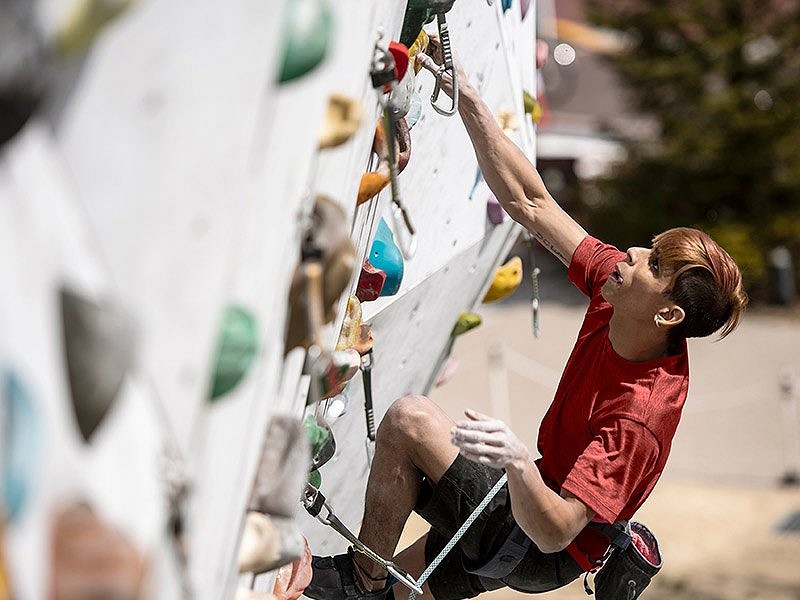
Will there be opportunities for these climbers to work and climb together in future, since Asia is such a big continent and travel and connecting young climbers must be more difficult than here in Europe?
There are possibly plans to do something together in the future, though this hasn't been finalised. I am sure they will meet each other at competitions such as the Asian Championships and World Cups and I hope they will keep bumping into each other for the next 50 years at different cliffs around the world. If they are all still climbing in 50 years, I did a good job!
Did you get the chance to climb outdoors with the athletes? Many of them seem to have ambitions outdoors, too.
No, they had left when I went to climb outside which was a shame as I could have asked Angie to put the quickdraws in for me! I think that Siddhi and Angie will climb lots outside. The others are competition climbers at the moment but I hope they go outside after their competition career ends.
The Tokyo 2020 Olympics kick off next year where Sport Climbing will make its debut. Did you perceive how this event is influencing the climbing culture in Japan, and these young athletes? It seems like Karin was perhaps affected by pressure and lacked the confidence in her abilities, possibly due to living in Japan where the standard of competitive climbing is so high?
In Japan there is massive competition to make the National Team and the standard is incredible. Karin was an excellent climber and very good technically, however I am sure that the pressure to perform at such a high standard was putting a psychological strain on her and inhibiting her from performing at her best. I do believe she could break through with one really good result.
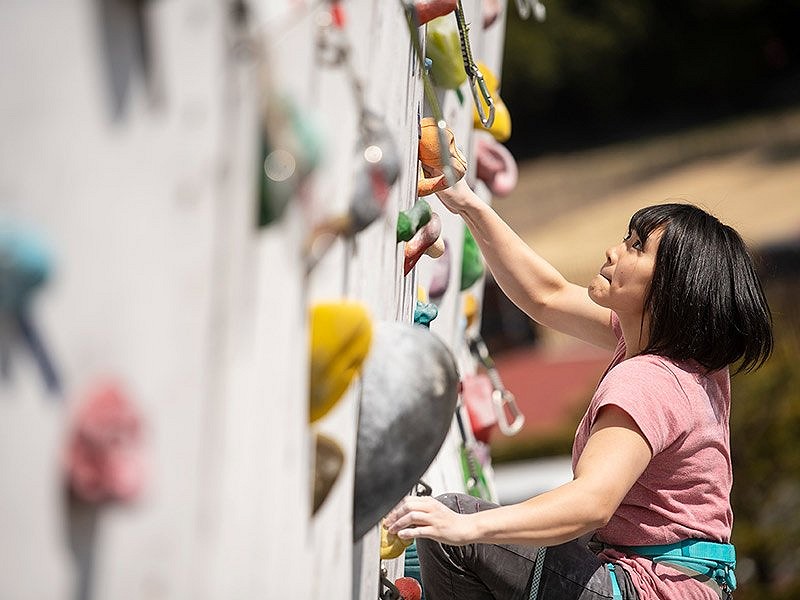
Mark from Singapore struggles to balance his studies as an aerospace engineer with his climbing training, but ultimately decides to dedicate more time to training. As more money and opportunities enter climbing, do you see this decision for young people to choose their climbing talent over further education or employment becoming a bit easier?
All top climbers have to make decisions on whether to pursue careers and money or their sport. It's not new - Ron Fawcett and Jerry Moffat had those problems way back when. Climbers will still have to make those decisions; the only real problem as the sport gets bigger is that to be at the top will be harder and there will be more pressure.
Where do you see the greatest challenges in climbing coaching and culture lying in the future as the sport grows?
I think the greatest challenge that climbing has is to maintain our friendly passion that allows climbers of every colour, race and nationality to get on and be friends and not become obsessive and nasty as some other sports have. I love the fact I have friends worldwide through my sport and I respect coaches and climbers from all over. A great climb is a great climb and a great climber is a great climber, let's keep that respect.
Watch the athlete profiles below:
Siddhi
Angie
Emmanuel
Ka-chun
Karin
Mark
The climbers compete against one another:
- SKILLS: Top Tips for Learning to Sport Climb Outdoors 22 Apr
- INTERVIEW: Albert Ok - The Speed Climbing Coach with a Global Athlete Team 17 Apr
- SKILLS: Top 10 Tips for Making the Move from Indoor to Outdoor Bouldering 24 Jan
- ARTICLE: International Mountain Day 2023 - Mountains & Climate Science at COP28 11 Dec, 2023
- ARTICLE: Did Downclimbing Apes help Evolve our Ultra-Mobile Human Arms? 5 Dec, 2023
- ARTICLE: Dàna - Scotland's Wild Places: Scottish Climbing on the BBC 10 Nov, 2023
- INTERVIEW: Loki's Mischief: Leo Houlding on his Return to Mount Asgard 23 Oct, 2023
- INTERVIEW: BMC CEO Paul Davies on GB Climbing 24 Aug, 2023
- ARTICLE: Paris 2024 Olympic Games: Sport Climbing Qualification and Scoring Explainer 26 Jul, 2023
- INTERVIEW: Malcolm Bass on Life after Stroke 8 Jun, 2023



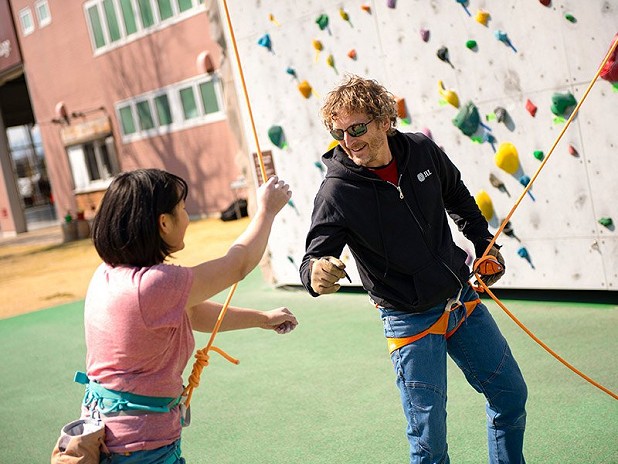
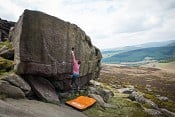

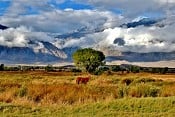

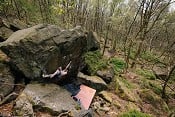








Comments
I have seen all of the films in this series and they truely inspiring.
Ian believes in people and encourages them to reach their true potential and achieve their ambitions.
I was lucky to go do my BMC Fundamentals 1 and 2 with Ian at Kendal Wall. I had a great time and leant a lot. Ian is a top man.
Sav
Agreed.
Champion as always squawk.
Really interesting vid
Sqwuak is the greatest! He has been so supportive!